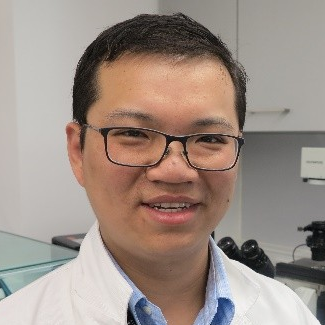Antibacterial Nanomaterials Coating: Fabrication and Applications
A special issue of Nanomaterials (ISSN 2079-4991). This special issue belongs to the section "Biology and Medicines".
Deadline for manuscript submissions: closed (14 June 2021) | Viewed by 28834
Special Issue Editor
Interests: cell-nanomaterial interactions; biomaterials; antibacterial nanomaterials; antifungal nanomaterials; implants
Special Issues, Collections and Topics in MDPI journals
Special Issue Information
Dear Colleagues,
Antimicrobial resistance (AMR) has become one of the major health issues in the 21st century. The problem of AMR has become more serious with the increase rate of antibiotic-resistant bacteria. Over several decades, bacteria have developed more resistance to each new antibiotic coming to market. Faced with this reality, the need for action to develop the strategy for antibacterial materials in health care is imperative. Nanomaterials are a very promising approach for the next-generation of antibacterial coatings. Antimicrobial surfaces are important in everyday applications, ranging from healthcare purposes to food and agricultural applications. Different fabrications can be utilised to design the antimicrobial surfaces, like the immobilisation of antibacterial agents into the matrix of materials, slow-release of antibacterial agents, functionalisation of surfaces to prevent the bacterial adhesion, and nanostructuring the surfaces to prevent and inhibit the growth of bacteria.
In this context, this Special Issue welcomes the submission of original research works as well as reviews dealing with antibacterial surfaces. Topics can range from fabrication to applications of antibacterial coatings.
You may choose our Joint Special Issue in Nanomanufacturing.
Dr. Vi Khanh Truong
Guest Editor
Manuscript Submission Information
Manuscripts should be submitted online at www.mdpi.com by registering and logging in to this website. Once you are registered, click here to go to the submission form. Manuscripts can be submitted until the deadline. All submissions that pass pre-check are peer-reviewed. Accepted papers will be published continuously in the journal (as soon as accepted) and will be listed together on the special issue website. Research articles, review articles as well as short communications are invited. For planned papers, a title and short abstract (about 100 words) can be sent to the Editorial Office for announcement on this website.
Submitted manuscripts should not have been published previously, nor be under consideration for publication elsewhere (except conference proceedings papers). All manuscripts are thoroughly refereed through a single-blind peer-review process. A guide for authors and other relevant information for submission of manuscripts is available on the Instructions for Authors page. Nanomaterials is an international peer-reviewed open access semimonthly journal published by MDPI.
Please visit the Instructions for Authors page before submitting a manuscript. The Article Processing Charge (APC) for publication in this open access journal is 2900 CHF (Swiss Francs). Submitted papers should be well formatted and use good English. Authors may use MDPI's English editing service prior to publication or during author revisions.
Keywords
- antimicrobial coatings
- antibacterial surfaces
- fabrication
- characterisation
- applications






